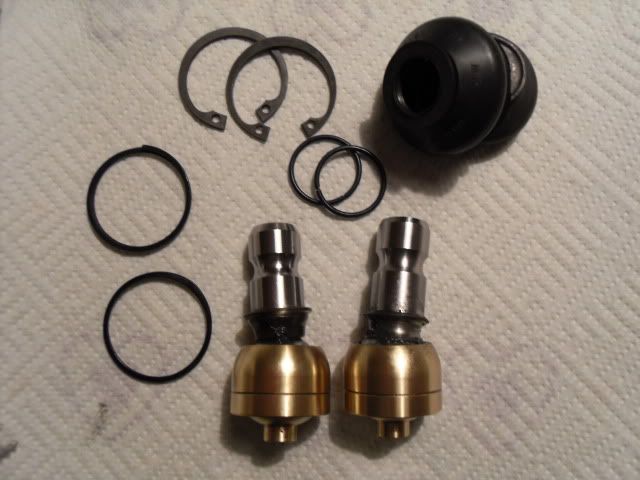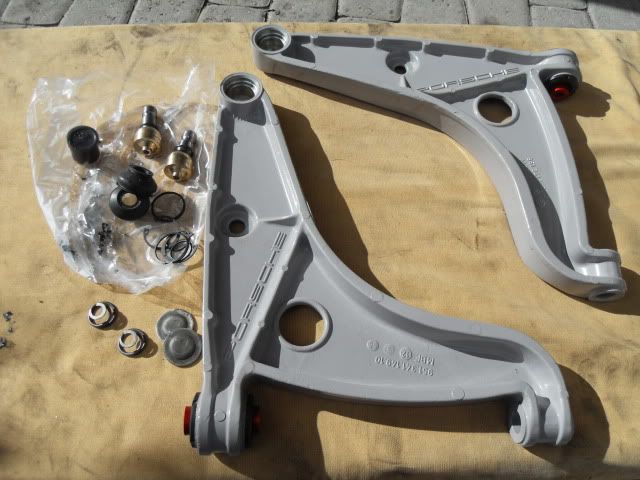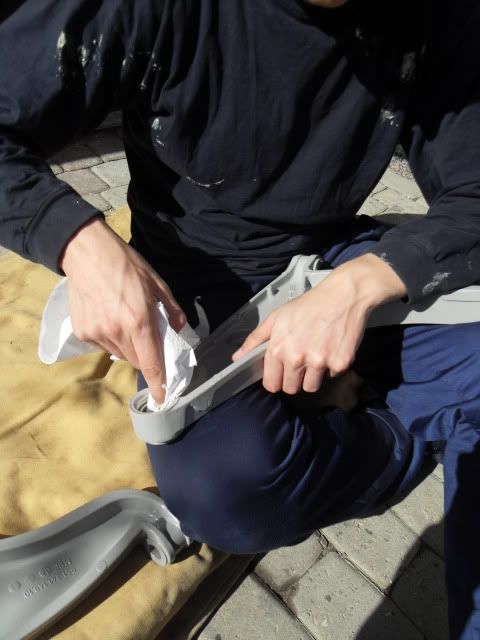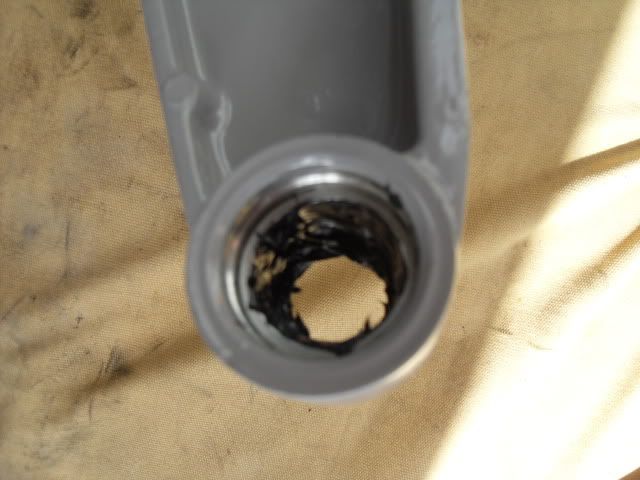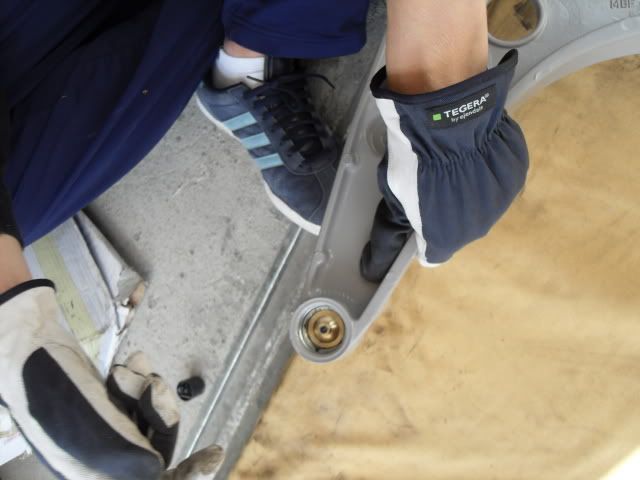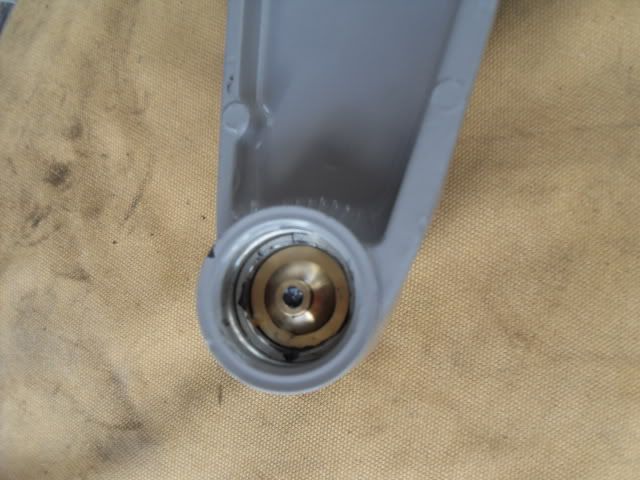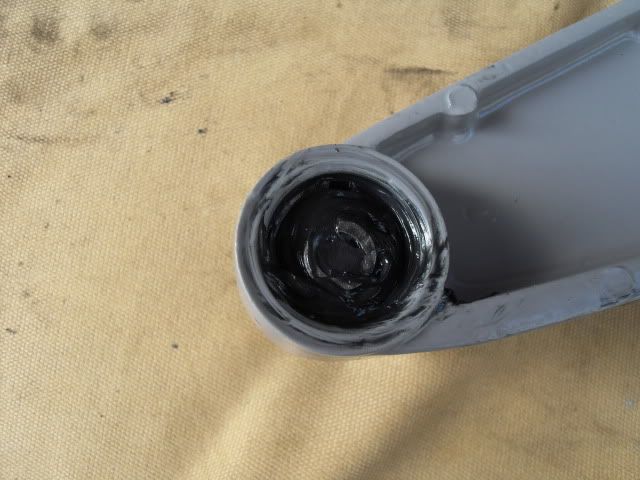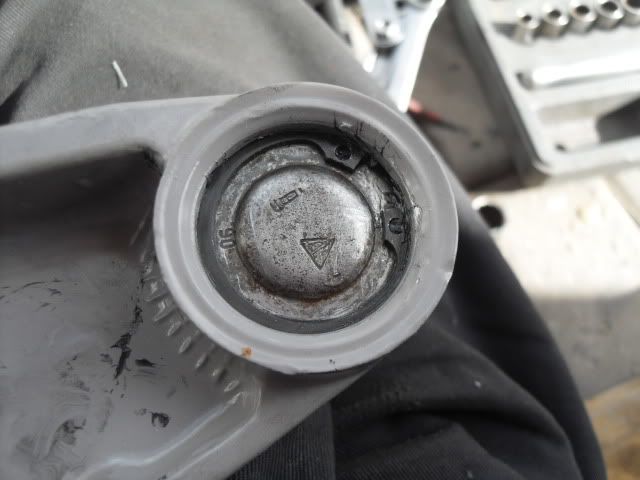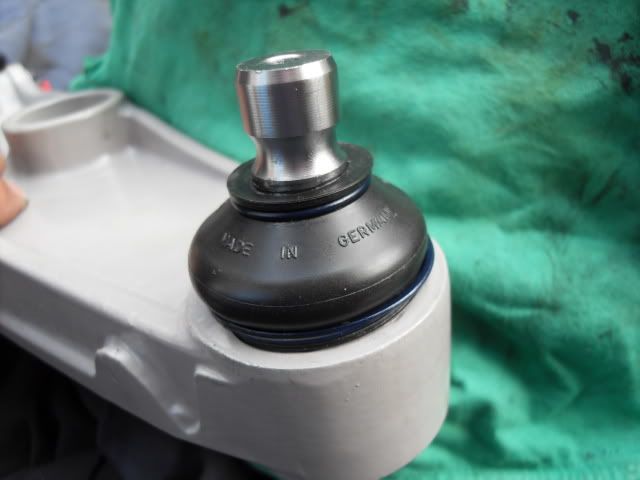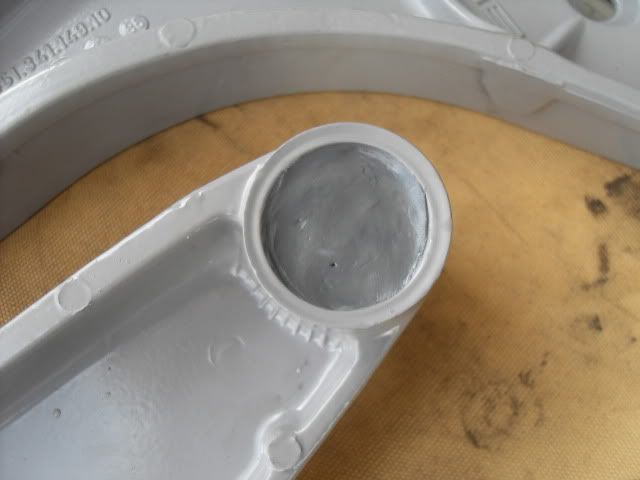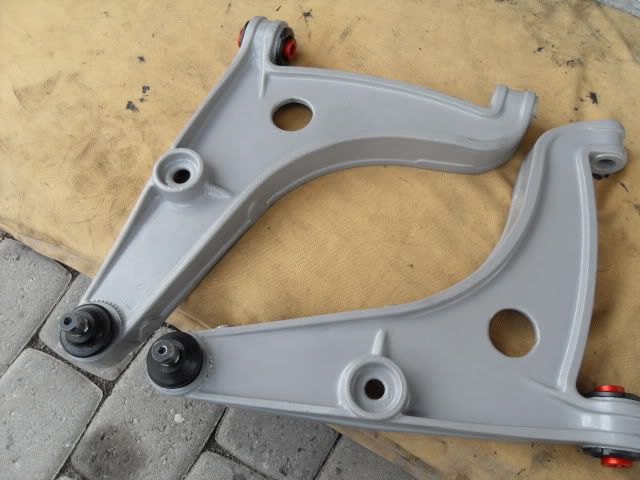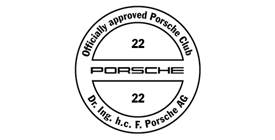As mentioned previously Beaky let me down at the recent track day due to a lower wishbone ball joint failure.
The ball joints themselves were of the replacement kit variety and differed from the standard after market kit in that the pins were slightly longer to readdress geometry changes through lower springs.
Anyway, after some thought I am given to wonder if the kit design is flawed. Under normal use the suspension is in equilibrium with the weight of the car being taken on the top mounts. All the wishbone and balljoint do is locate the bottom of the strut horizontally. Any forces on the ball joint are side to side.
However, when you bring an anti roll bar into the equation you are then introducing upward and downward forces on the wishbone. These ball joint kits have a cup and a spring to keep the ball located in the top of the ball joint . Surely this spring must be forced to compress if you push the wishbone up - as might happen under heavy cornering loads transferred across the cat by the roll bar?
Another thing - The original Porsche ball joints have epoxy poured in on top of the cap (when upside down). I had thought this was just to stop people tampering with them but now believe it also helps to hold the retaining split ring in its slot. This being the case, if you have rebuilt ball joints and haven't epoxy filled the back, (whether my thoughts above are correct or not) I would certainly do the epoxy.

The ball joints themselves were of the replacement kit variety and differed from the standard after market kit in that the pins were slightly longer to readdress geometry changes through lower springs.
Anyway, after some thought I am given to wonder if the kit design is flawed. Under normal use the suspension is in equilibrium with the weight of the car being taken on the top mounts. All the wishbone and balljoint do is locate the bottom of the strut horizontally. Any forces on the ball joint are side to side.
However, when you bring an anti roll bar into the equation you are then introducing upward and downward forces on the wishbone. These ball joint kits have a cup and a spring to keep the ball located in the top of the ball joint . Surely this spring must be forced to compress if you push the wishbone up - as might happen under heavy cornering loads transferred across the cat by the roll bar?
Another thing - The original Porsche ball joints have epoxy poured in on top of the cap (when upside down). I had thought this was just to stop people tampering with them but now believe it also helps to hold the retaining split ring in its slot. This being the case, if you have rebuilt ball joints and haven't epoxy filled the back, (whether my thoughts above are correct or not) I would certainly do the epoxy.



